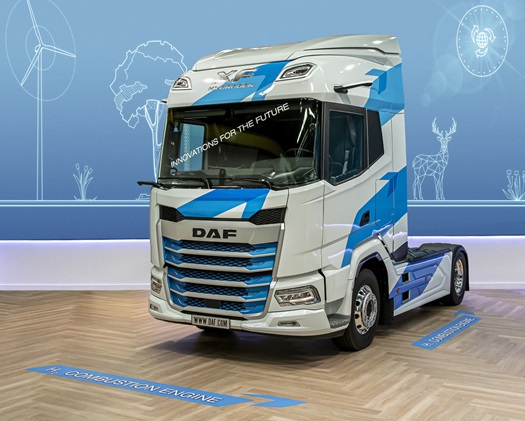
Clean diesel technology
The future of the internal combustion engine
It is good to reflect on the impressive steps that have already been taken in terms of reducing the emissions from diesel-powered trucks. Further refinements in the technology and, above all, the arrival of new generations of CO2-neutral fuels mean that also the reliable and efficient internal combustion engine still has a clean future.
Huge reductions in NOx and soot emissions
A modern truck with a Euro 6 diesel engine emits around 95% less nitrogen oxide than a truck from 25 to 30 years ago. Emissions of soot particles have been reduced by no less than 97% in the same period of time. To put it another way: one Euro 1 truck from 1994 emits as much nitrogen oxide as 20 trucks from the present day. If we look purely at emissions of soot particles, one Euro 1 truck from 1994 can be compared to 35 modern trucks from the present day.
The illustration shows that the biggest step that can be taken in the short term to reduce emissions is by replacing older trucks with the most modern Euro 6 vehicles.

Major steps in reducing CO2
And what about CO2? The latest generation of DAF trucks are over 25% more efficient than their predecessors from 20 years ago. Over 25% less fuel consumption means that CO2 emissions are directly reduced by 25%. We can expect to see further improvements as new types of fuels become available.
HVO is already on the market and can reduce CO2 emissions by up to 90%. Within the years to come the internal combustion engine will also be able to operate on hydrogen, resulting in 100% CO2 reduction. Looking into the further future, next to hydrogen, there are more fuels on the horizon that are 100% CO2 neutral from production to combustion and that are perfectly suitable to power the internal combustion engine. An example are the so-called renewable ‘Power-to-Liquid fuels’ or so-called e-fuels, whereby hydrogen is generated via electrolysis, using green electricity captured from wind and solar energy.

B100: 100% bio produced fuel
B100, or 100% biodiesel, is diesel produced from natural, renewable resources. It is sourced from either rapeseed (also RME: rapeseed methyl esters) or second generation (recycled) natural oils, such as Used Cooking Oils (UCO). Compared to standard (fossil) diesel fuel, production of B100 using RME results in up to 60% less CO2 emissions. If recycled sources are used, CO2 emission reductions even go up to 90%.




